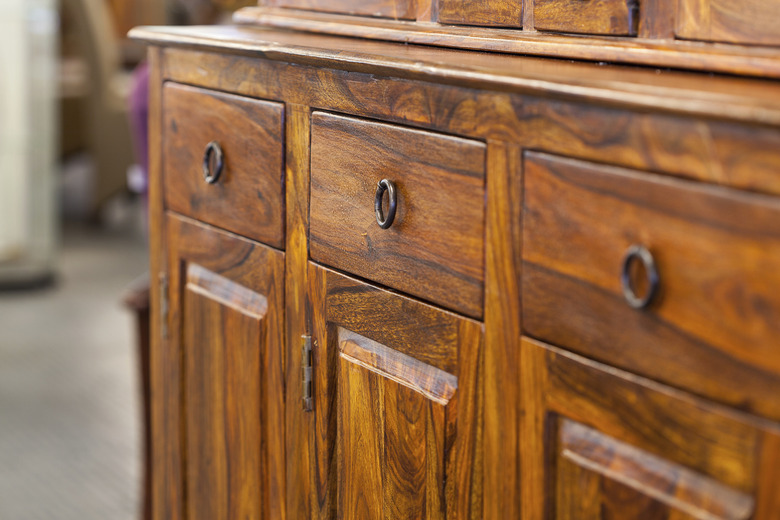Rubbing Alcohol & Damage To Wood Furniture
Rubbing alcohol, also called isopropyl alcohol, poses a hazard to most wood furniture finishes. Even in small quantities, such as spatter drops, rubbing alcohol does more than leave a stain on wood. The alcohol acts as a solvent, destroying wood furniture finishes on contact. It's possible to minimize the damage after a mishap.
Isopropyl Alcohol's Effects
Isopropyl Alcohol's Effects
Isopropyl alcohol doesn't leave a stain like a red wine would. It's colorless. The harm comes from its ability to liquefy common wood finishes, such as varnish and furniture stain. Instead of discoloring finished wood, the alcohol dissolves the finish. A spill, splatter or even dampness from the bottom of a bottle or a rag with rubbing alcohol residue can instantly mar the finish on wood. It may also damage lacquered or painted wood furniture.
Limit the Harm
Limit the Harm
Sop up the rubbing alcohol immediately. The longer it's in contact with the wood, the more damage the rubbing alcohol does. The pool of alcohol will spread — don't rub the spill or spots, and don't tilt the furniture. Blot the moisture with an absorbent material such as a rag, sponge or T-shirt. Wherever the alcohol runs on the surface, it damages the finish. Don't use newspaper, magazines or any paper with dye on it. The solvent effect of the rubbing alcohol can leave ink stains on the wood.
Restore the Surface
Restore the Surface
Apply furniture oil to the damaged area. Squeeze a dime-sized dot of the oil on a clean rag and rub it in the direction of the wood grain. Rub more in if necessary to match the color. In the case of rubbing alcohol that has dried on the furniture, make a paste of equal parts linseed oil and rottenstone, a gentle abrasive. Rub the paste in the direction of the grain with a soft cloth. Hardware and paint suppliers sell these ingredients. Alternatively, mix equal parts of baking soda with lemon oil or mineral oil. If the area looks dull, buff it with furniture wax. A paste wax can help match a shiny hard finish.
Protect Against Damage
Protect Against Damage
Keep the bottle on a tray with sides that will hold spilled liquid when you're using rubbing alcohol. Store it away from sources of heat and flame, and out of reach of children. In addition to posing a hazard to your furniture, rubbing alcohol is flammable and toxic. According to Spencer Seager and Michael Slabaugh, authors of "Organic and Biochemistry for Today," rubbing alcohol has caused medical complications in children and adults who breathed the vapor or absorbed the alcohol through the skin.
